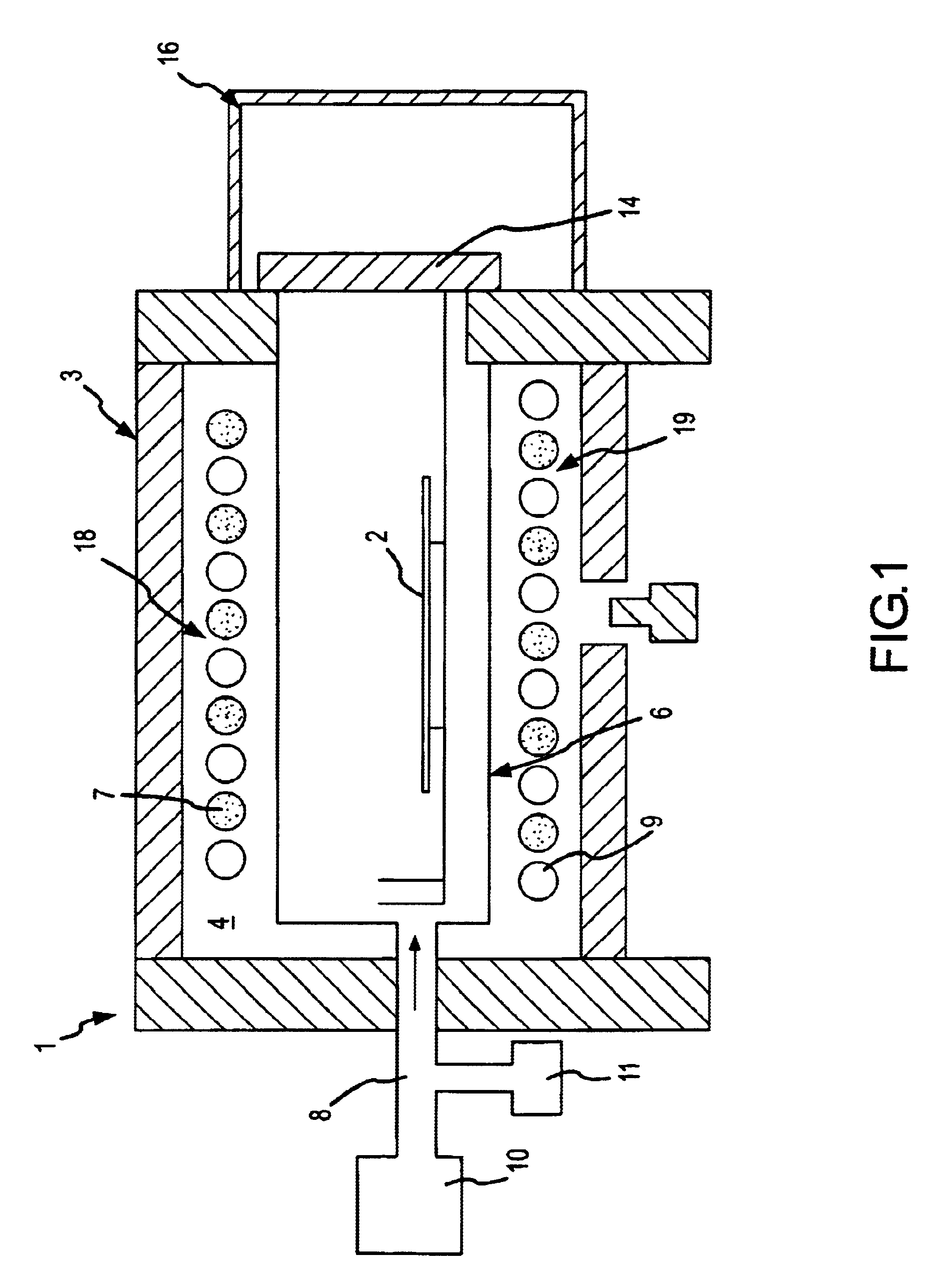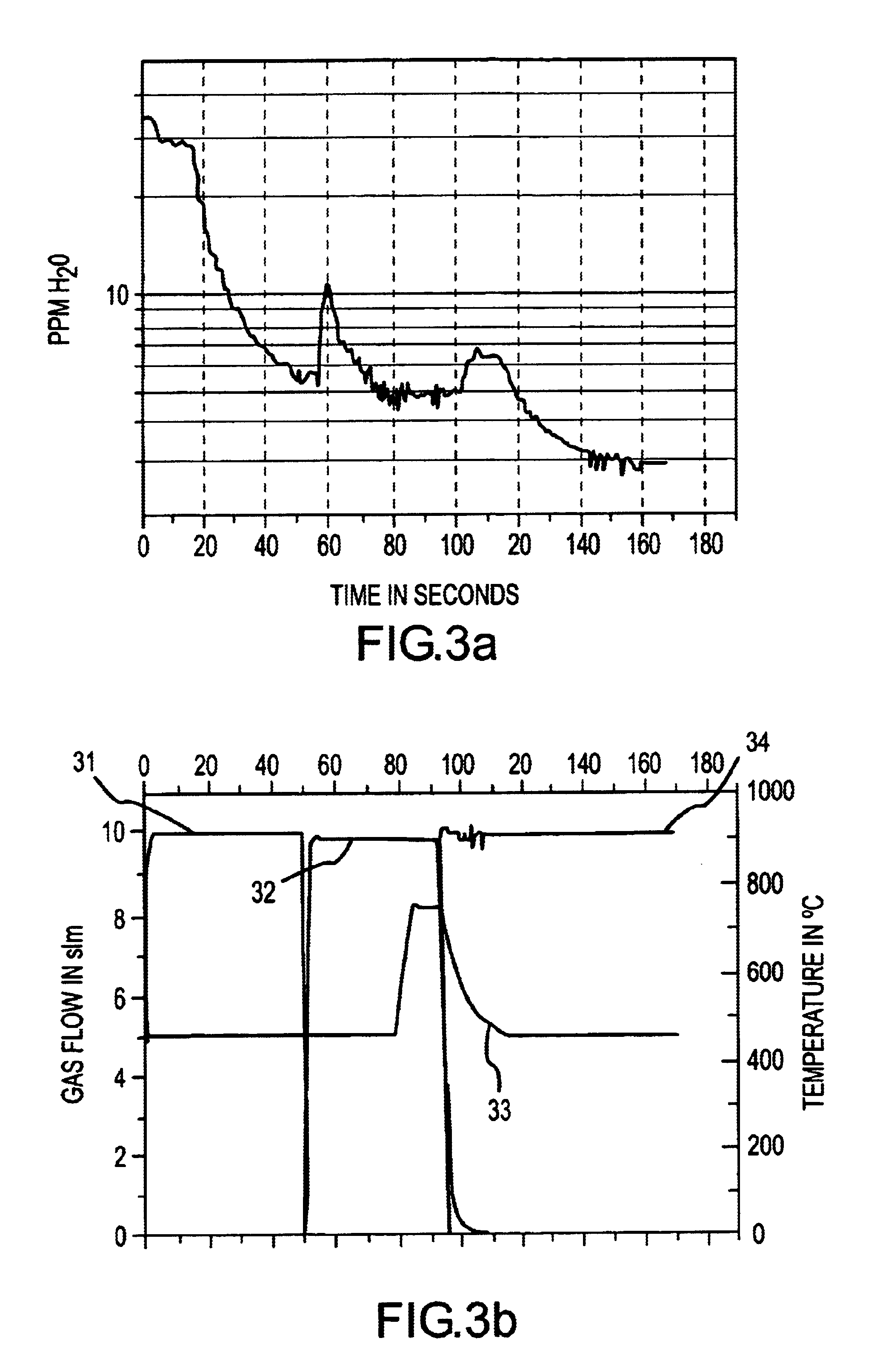Method for the removal of adsorbed molecules from a chamber
a technology of adsorbed molecules and chambers, which is applied in the direction of cleaning hollow objects, lighting and heating apparatus, and using liquids to clean, etc. it can solve the problems of adversely affecting the process, adversely affecting the formation of oxygen-free surface layers, and adversely affecting the so-called cop's or crystal originated particles, so as to accelerate the desorption of undesired first molecules, prevent a renewed adsorption, and increase the throughput rate of the uni
- Summary
- Abstract
- Description
- Claims
- Application Information
AI Technical Summary
Benefits of technology
Problems solved by technology
Method used
Image
Examples
Embodiment Construction
FIG. 1 shows a schematic illustration of a rapid heating unit 1 for the thermal treatment of substrates 2, as known, for example, from the not-prepublished DE 199 23 400.0 of this same applicant. The apparatus 1 has a housing 3, which in the interior can include a reflective chamber 4. Provided within the housing 3 is a processing chamber 6 that is made, for example, of quartz. Within the processing chamber 6 a support is provided for accommodating and holding a semiconductor wafer 2. The processing chamber 6 is provided at one end with a gas inlet line 8 that is in communication with at least two different sources of gas 10 and 11. An end of the processing chamber 6 opposite the gas line 8 is closed off by a chamber door 14. In the region of the chamber door 14, a transfer chamber 16 can be provided on the outer side of the housing 3 via which, in a known manner, semiconductor wafers 2 are introduced into the processing chamber 6 and are removed therefrom.
The processing chamber 6 i...
PUM
| Property | Measurement | Unit |
|---|---|---|
| Angle | aaaaa | aaaaa |
| Temperature | aaaaa | aaaaa |
| Pressure | aaaaa | aaaaa |
Abstract
Description
Claims
Application Information
 Login to View More
Login to View More - R&D
- Intellectual Property
- Life Sciences
- Materials
- Tech Scout
- Unparalleled Data Quality
- Higher Quality Content
- 60% Fewer Hallucinations
Browse by: Latest US Patents, China's latest patents, Technical Efficacy Thesaurus, Application Domain, Technology Topic, Popular Technical Reports.
© 2025 PatSnap. All rights reserved.Legal|Privacy policy|Modern Slavery Act Transparency Statement|Sitemap|About US| Contact US: help@patsnap.com



